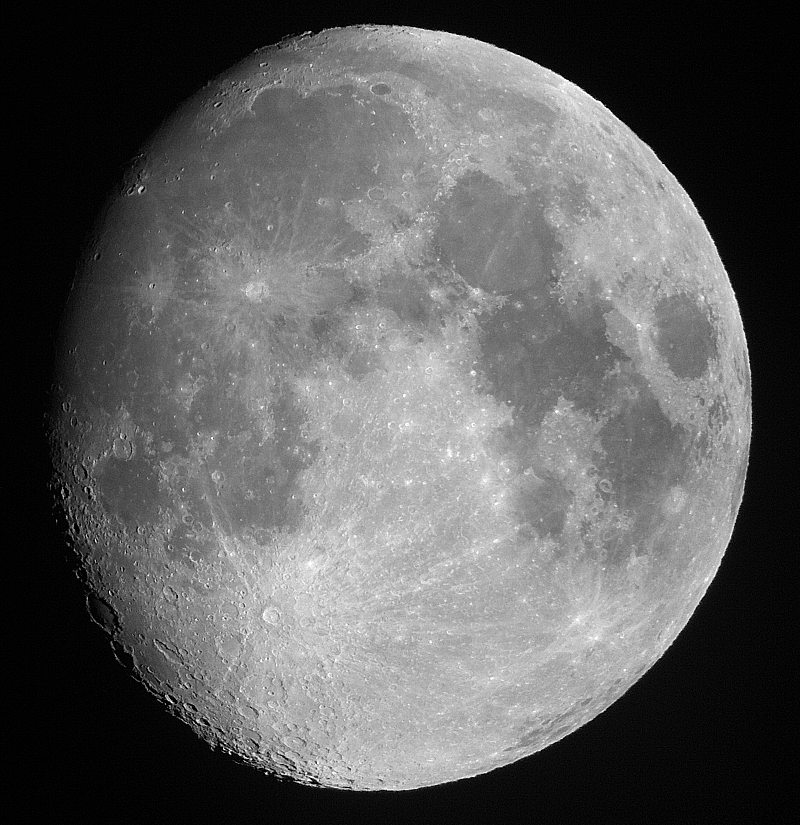
More Software Tests, iPhone 4 Gibbous Moon
Posted: 17 September 2013
Monday, 16 September 2013, started out mostly clear, but like recent days, clouds increased as the day progressed. Fortunately, there were a few breaks in the cloud cover as sunset approached. The observatory was opened at 1830 MST, 91°F, to partly cloudy skies. Sunset occurred at 1830 MST. At 1837 MST, viewed Venus, 83X and 222X. Venus is nearly "half-phase" and was showing a slightly gibbous disk this night. I then slewed to Saturn and viewed it at 222X. One cloud belt and Cassini Division were visible.
Next, viewed the waxing gibbous moon using the Explore Scientific 2" 9mm 100° eyepiece (222X). Seeing was not very good, but there were a few nice sights along the terminator.
I then did a few more tests using an application I'm beta testing. A new version had been received shortly before opening the observatory this night. It fixed a couple of bugs I had previously reported.
By 1900 MST, clouds were approaching the moon. I ended the testing and began setting up to photograph the moon using the iPhone 4. I mounted the iPhone 4 on the 8" LX200-ACF using the MX-1 Afocal Adapter with a 26mm eyepiece (77X). This photo was taken using the iOS Camera app:

I hope to upgrade to the iPhone 5S this Friday. I will need to get a new afocal adapter since the MX-1 does not fit the larger iPhone 5 models. I will probably try modifying my homemade afocal adapter first.
At 1906 MST, I resumed observing the moon, 83X. Then slewed back to Saturn. The moon Titan was now visible.
Due to the clouds, I began closing up for the night.
The observatory was closed at 1930 MST, 82°F.
Comments are welcome; use the Comments section below, or you can Email Me. Thanks.
Cassiopeia Observatory Home Page